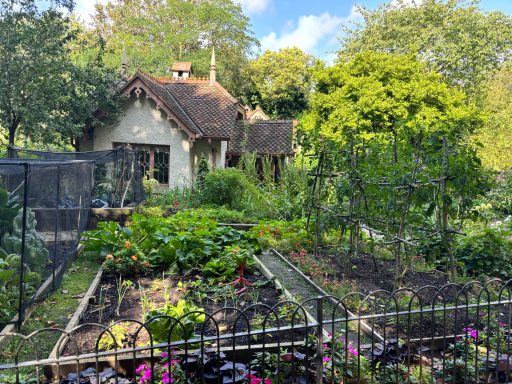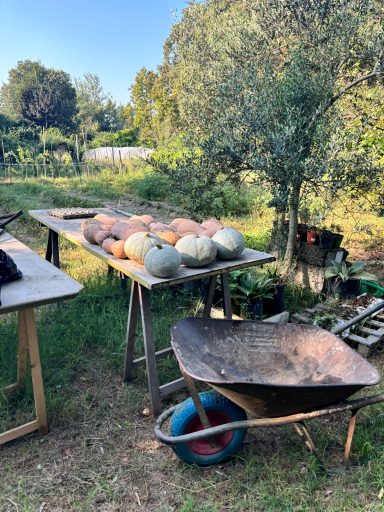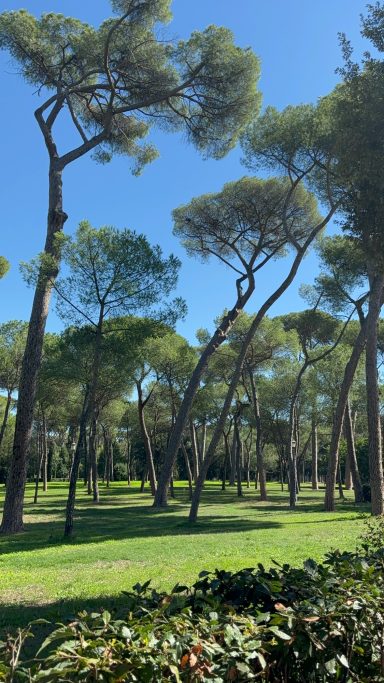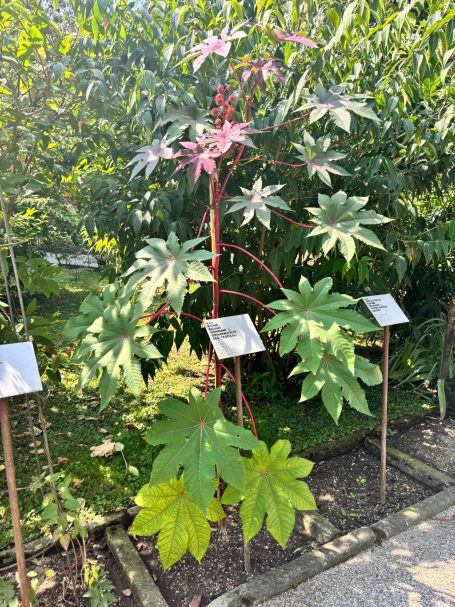GARDEN TOUR
Find out each week's theme
Each week this September I spent three to four days exploring a corner of northern Italy. I focused my explorations in different areas of interest from Agritourism farms, to horticultural institutions, and comparing public and private villas and sculptural parks along the way.
My travels this late summer were bookended by a long weekend in London to begin the trip and a similar end-cap to the adventures on Fishers Island the first week of October.
I began my travels exploring the Queen's gardens of St. James park. In particular I visited the traditional cottage garden, or a rather traditional portager garden.
Northern Italy GardenTour
August - September 2024
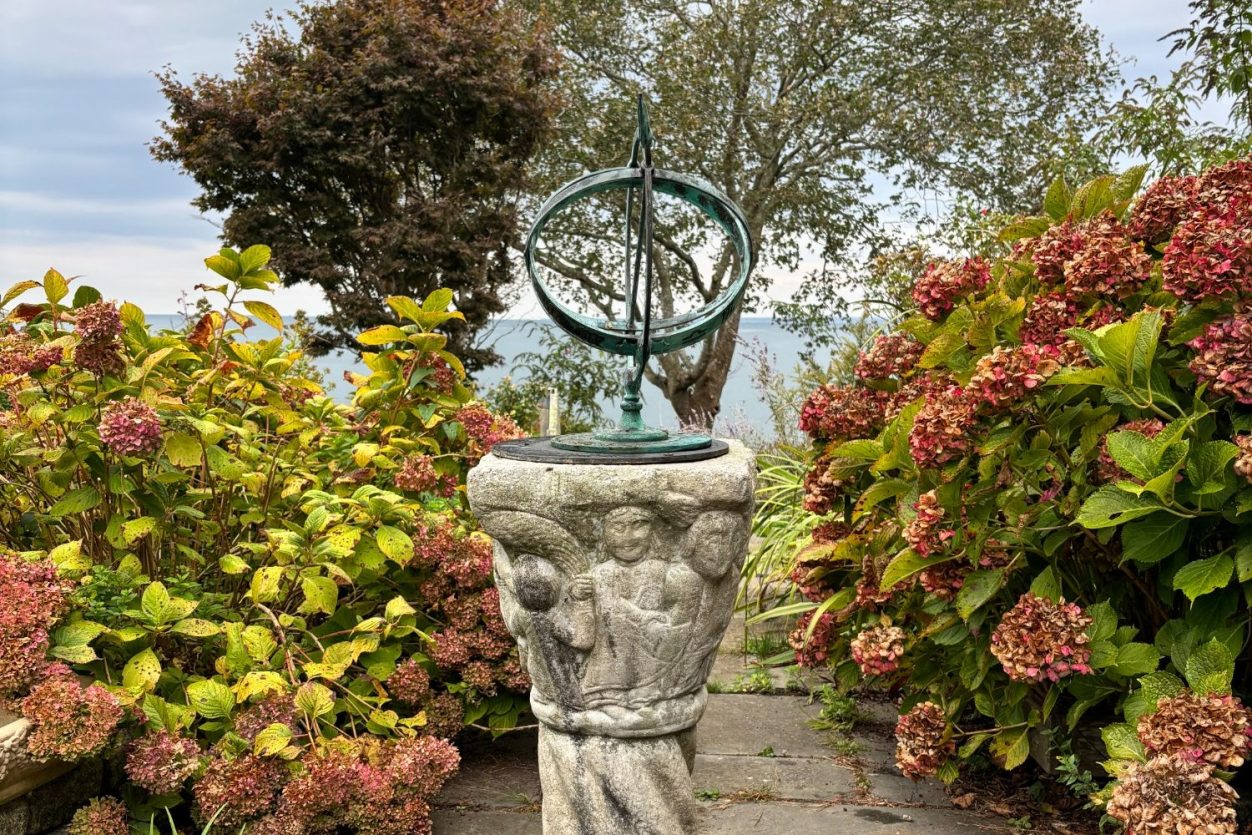
DESTINATIONS
- St. James Park, London, UK
- Nuova Terraviva Association, Ferrara, Emilia Romagna, Italy
- The Botanical Gardens of Padua, Italy
- Agricultural School of the Monza Park, Italy
- Murabilita Horticultural Festival, Lucca, Italy
- Garzoni Villa and Pinnochio Park, Collodi, Italy
- Reggioli Agrotourismo, Gaiole in Chianti, Tuscany Italy
- Botanical Dry Garden, Orbetello, Grossetto, Tuscany Italy
- Sacro Bosco Monster Park, Bomarzo, Viterbo, Lazio, Italy
- Villa Borghese, Rome, Lazio, Italy
- Fisher's Island, New York, United States
GARDEN TOUR Chronicle ~ Settimanale
Weekly Journal of Summer Scholarship Work Experience. Weekly, 3-4 days I dedicated to botanical gardens, school, and events focused on central Tuscany retracing my roots, and creating new paths.
Week 1 - St. James Park, London, England
The park in London contains a real live menagerie of different fowl and various sweeping ornamental beds.
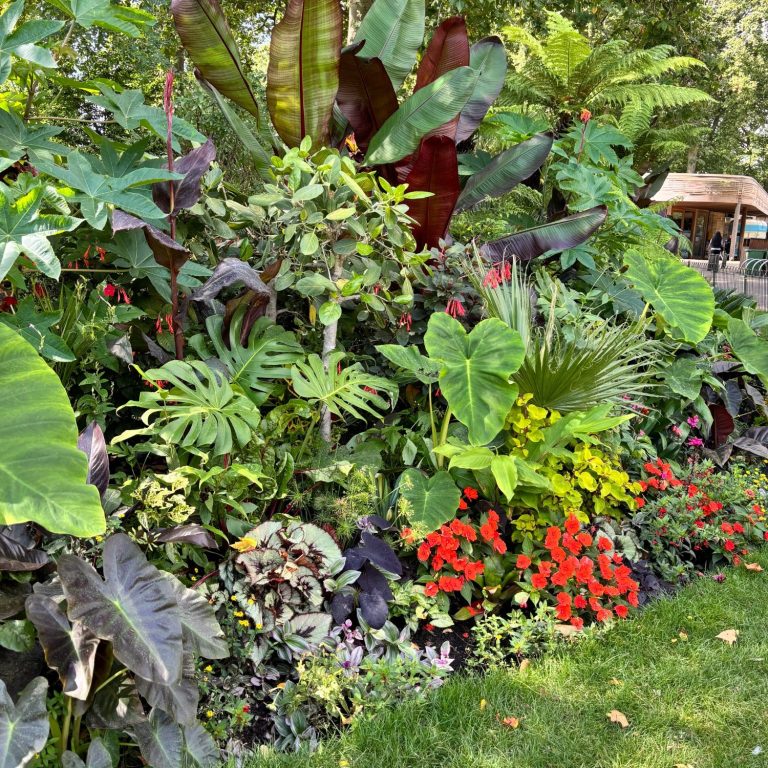
I walked through the different areas of the beds and plantings of the Queen's garden
Week 2: Terraviva, Emilia Romagna, Italy
La Nuova Terraviva Association gardens encompass four hectares dedicated to agriculture. Designed by the Renaissance architect, Biagio Rossetti, the addition of the garden in 1457 envisaged a countryside within the city and its growing extension proceeding from the Castle (of San Michele) towards the city walls. This large area has been preserved for 500 years and now offers the community a weekly CSA produce box, a didactic farm with livestock, an apiary and a functioning pizza oven.

Nuova TerraViva Association
The first week of my trip in Italy I spent two days volunteering at the Nuova Terraviva Association in Ferrara, Emilia Romagna Italy. I shadowed the staff clearing the early summer crops of tomatoes, and squash, integrate compost in to the soil and harvest from the turnover for the CSA clients.
Terra Vivia Association is an educational farm and community garden that offers CSA membership, classes, and workshop for youth. The website states,
"this rare piece of countryside within the walls… is the only case in Italy of such a large space (4 hectares) also dedicated to agriculture. In the Renaissance plan by Biagio Rossetti, the addition of 1457 envisaged a countryside within the city and its growing extension proceeding from the Castle (of San Michele) towards the city walls.
This large area has been preserved for 500 years. After the Second World War, the Municipality of Ferrara purchased it in 1987 from a private individual, allowing the preservation of a vast “emptiness” that gives such a sweet beauty to walking in the countryside… while staying in the city."
Using a systematic technique to yield a higher harvest by air layering in to a dome trellis of the raspberry vines to produce more and create a new physical shape to the garden.
Week 2: Botanical Gardens of Padua
I visited Padua's botanical garden which included not only various temperate and aquatic gardens but access to herbarium sheet, a museum, and specimens dating back more than 500 years.
Botanical Garden (Orto Botanico), Padua
“The plan is a perfect circle, subdivided into four units by orthogonal paths, oriented according to the main cardinal directions. When the four entrances were re-designed in 1704, the wrought-iron gates leading to the inner circles and the four acroteria were placed on eight pillars and surmounted by four pairs of wrought-iron plants.”
Padua Botanical Garden
While visiting Emilia Romagna and working on the didactic farm I spent a day visiting the Botanical Gardens of Padua a half an hour away from Ferrara and the Este Gardens were I was based.
The world's first botanical garden was created in Padua, Italy in 1545. It still preserves its original layout – a circular central plot, symbolizing the world, surrounded by a ring of water.
Greenhouse for Goethe's Palm surrounded by Lily ponds,
"a source of inspiration for the famous German author, who saw and admired it in 1786 prior to writing his botanical essay Metamorphosis of Plants."
A UNESCO World Heritage Site - The Botanical Garden of Padua has two important collections: the library that contains more than 50,000 volumes & manuscripts of historical and the Herbarium, which is the second most extensive in Italy. Particularly rare plants were also traditionally collected and grown in the garden. Currently, there are over 6,000 species, arranged according to systematic, utilitarian and ecological-environmental criteria, as well as thematic collections.
Week 3: BAM & Vertical Garden, Milan
Gae Alluenti Piazza, BAM, Vertical Gardens
I spent the day touring the Library of Trees, Biblioteca dei Alberi Milano, BAM, by Inside Ouside,Petra Blaisse with a bio dynamic fish ponds, landscaping by Piet Oudolf and the two residences of Stefano Boeri's Vertical Forest
Inspired by the designer:
" The Vertical Forest is the prototype building for a new format of architectural biodiversity which focuses not only on human beings but also on the relationship between humans and other living species. The first example, built in Milan in the Porta Nuova area, consists of two towers that are respectively 80 and 112 meters high, housing a total of 800 trees (480 first and second stage trees, 300 smaller ones, 15,000 perennials and/or ground covering plants and 5,000 shrubs), providing an amount of vegetation equivalent to 30,000 square meters of woodland and undergrowth, concentrated on 3,000 square meters of urban surface." -
Stefano Boeri
Week 3: MONZA, Lombardy, Italy
From Milan as a home base I visited the town city of Monza and the Agricultural School of the Monza Park, the school offers many courses from Arboriculture, to Floral Design.
Adjacent to the school are the royal gardens of Monza, the Villa Reale of Monza, that contain:
"over 40 hectares... a pond, a rock garden, the Antro di Polifemo (Polyphemus cave) and a classical temple. - Serrone orangery and the Rose Garden, boasting 400 varieties of roses."
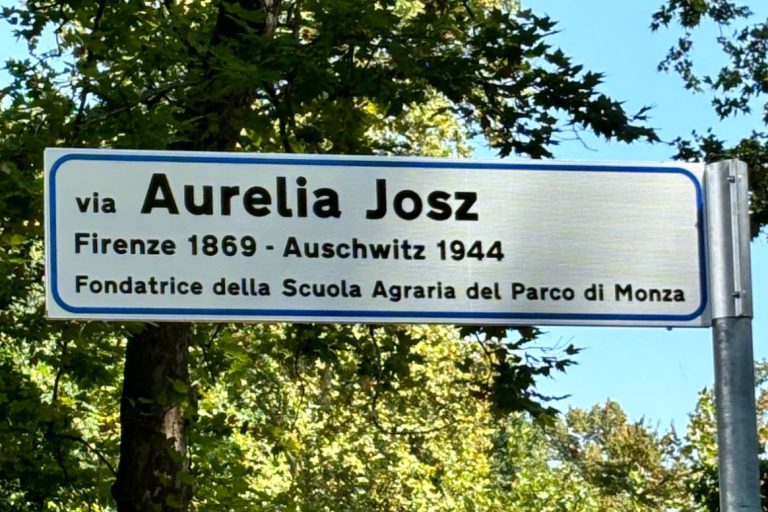
Boulevard named after female founder
Eager to explore the school founded in the early 1920s by Aurelia Josz who created an academic horticultural space for young aspiring women that is now coed.

Regal Grounds
Adjacent to the agricultura school is the UNESCO site of the Regal Palace of Monza and estate which are now a series of public gardens,

Academic Ambiance
Academic professional staff that range in backgrounds rich in arboriculture, horticulture, and floristry to name only a few of the many focuses and career oportunity paths.
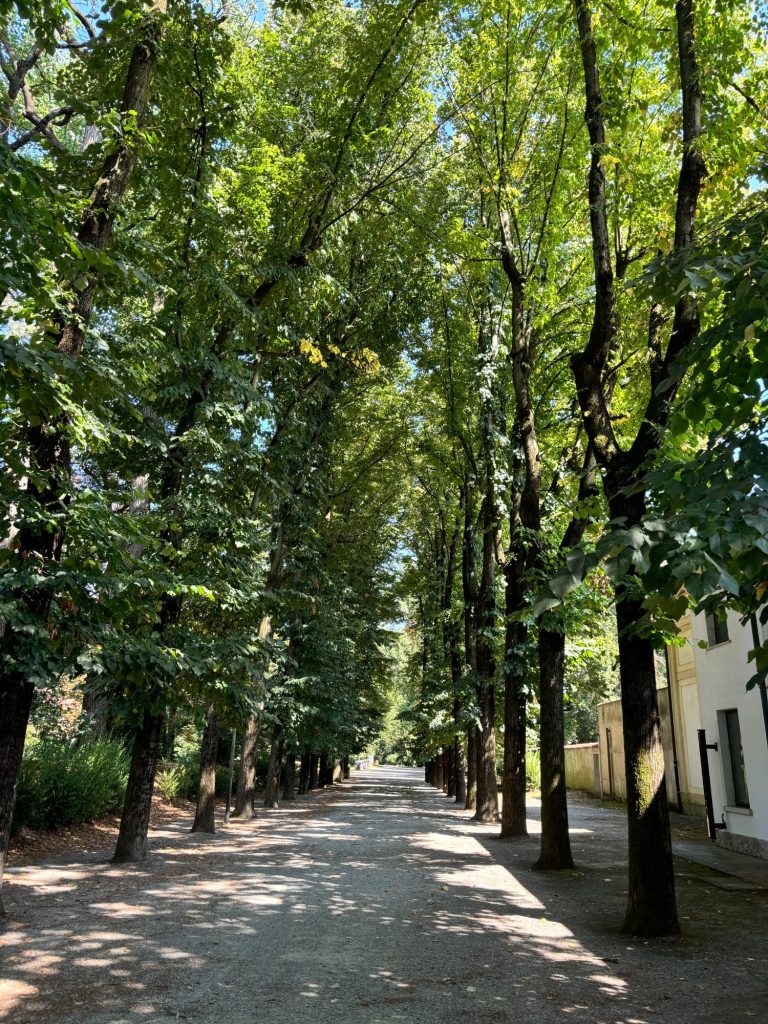
Traditional Hertiage
Monza is a walkable and welcoming city with long shade boulevards and a park offering a wide spectrum of recreational activities, sport, and leisure allow within minutes of the historic old town center.

Efficiency
Integrated curriculucum that helps foster civic engagement and is the pride of the Lomardy region while teaching sustainable techiniques just outside the hustle of rome

Multifunctional Space
Campus is open to the public and visitors can tour the grounds and take a moment respite a local cafe offer wines from surroundings. During the summer youth camp occupies the garden grounds
La Vigna di Leonardo - Leonardo da Vinci's Vineyard
Leonardo da Vinci's Vineyard is a vineyard the Duke of Milan, Ludovico Maria Sforza best known as Ludovico il Moro, gave as a gift to Leonardo da Vinci in 1498 while he was working on the painting of Last Supper in the nearby refectory of the cathedral and Dominican convent of Santa Maria delle Grazie.

Intricate Details
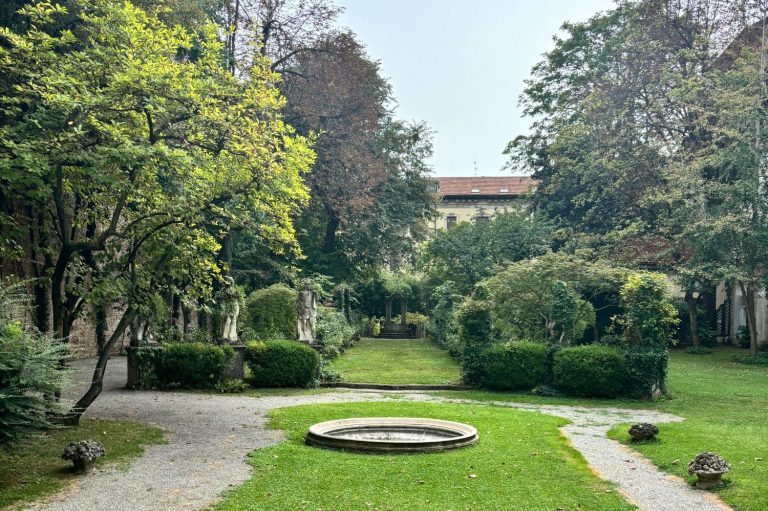
Private Urban Oasis

Vertical Green Cloister

Affresco Artwork

Old world Design

Sculpture Highlights
Week 4: Agricultural Conference Murabilita- Lucca
Specialized Italian and foreign nurseries offering a wide range of plants, including rare, ancient, and new cultivars, fruit plants, equipment, crafts, and food and wine products. Murabilia event in Lucca features cultural, botanical, and horticultural programs with exhibitions, conferences, guided tours, and workshops.
Week 2: Garzoni Villa & Pinnochio Park, Collodi
Including many works such as the “Pinocchio & the Fairy”, the monument by Emilio Greco and many great artists of the 20th century, like the Piazzetta dei Mosaici by Venturino Venturi,Pietro Consagra’s sculptures, to Marco Zanuso’s Pinocchio.
In the 18th century, the Garzoni were a powerful family from Pescia, of Ghibelline stock, who had suffered the confiscation of their property, banishment and exile.
iThey fled to Luccese hills and they rose to the highest State offices. The age-old taste for provocation and defiance led them to build a villa here on the ancient boundary between the Grand Duchy and the Republic of Lucca.
Week 3: Botanical Gardens of Lucca, Tuscany
Botanical Gardens of Lucca Photo Gallery
The Lucca's Botanical Garden is the most precious garden in Lucca and extends for two acres in the southeast corner of the old town. Founded in 1820 by Maria Luisa of Bourbon, Duchess of Lucca, it is a scientific institution that preserves living collections of plants in a path of colours, sounds and smells that brings you around the world, illustrating both specimens from distant countries and treasures of the local flora and biodiversity.Here are photographs from my visit to the Botanical Gardens of Lucca, in Tuscany.
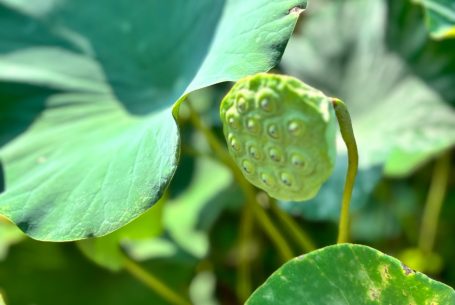
Lucca Botanical Garden Tour- Italian
Week 5: Botanical Dry Garden, Orbetello, Grosetto, Tuscany
Lorem ipsum dolor sit amet, consectetur adipiscing elit. Nulla euismod condimentum felis vitae efficitur. Sed vel dictum quam, at blandit leo.
Week 6: Sacro Bosco - Monster Park, Viterbo Lazio
Lorem ipsum dolor sit amet, consectetur adipiscing elit. Nulla euismod condimentum felis vitae efficitur. Sed vel dictum quam, at blandit leo.
Week 6: Borghese Gardens, Rome
Lorem ipsum dolor sit amet, consectetur adipiscing elit. Nulla euismod condimentum felis vitae efficitur. Sed vel dictum quam, at blandit leo.
Fishers Island Floral Design
At the end of travels I had a rare chance to design the floral arrangemnts for a family reunion on Fishers Island.
We need your consent to load the translations
We use a third-party service to translate the website content that may collect data about your activity. Please review the details in the privacy policy and accept the service to view the translations.

